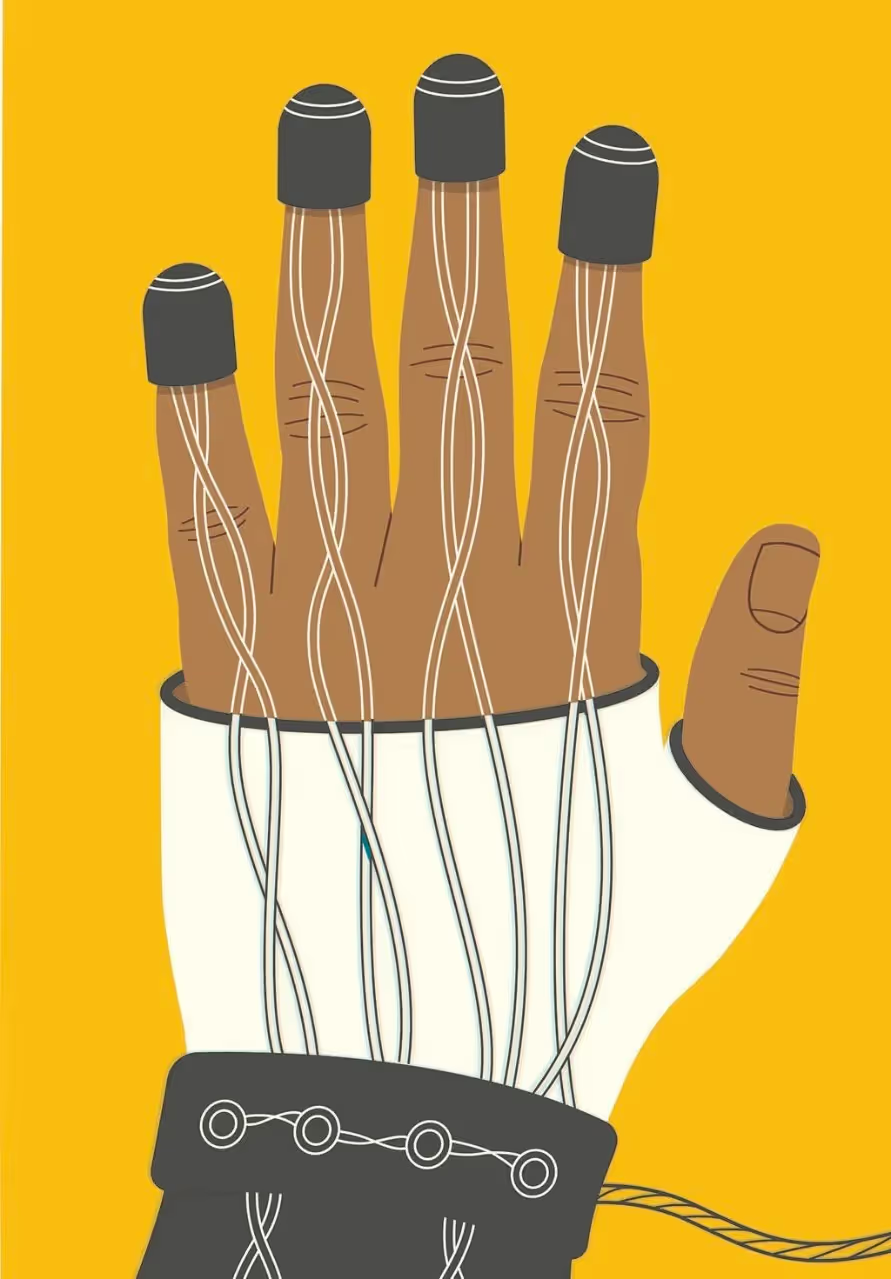One of the most common questions I get from people with Parkinson’s disease (PD) these days is, “Where can I get those new vibration gloves?” Vibrotactile or vibratory gloves are a type of wearable technology developed by Peter Tass, MD, PhD and colleagues from Stanford University. They work by using small, embedded mechanical stimulators to deliver weak vibration to the wearer’s fingertips to help improve symptoms of PD. But, how do they work?
In a normal brain, some signals from different parts of the brain synchronize, or fire at similar frequencies, as they communicate. In PD, there is abnormal synchronization of signaling of the neurons or brain cells in particular regions of the brain. Invasive treatments such as deep brain stimulation (DBS) use electrical stimulation to create more “normal” patterns of signaling artificially but there are some drawbacks. It is an invasive surgery, does not treat all the symptoms of PD, and is highly dependent on the skill of the surgeon and programmer. Vibration, on the other hand, offers a noninvasive technology that aims to DEsynchronize the affected areas of the brain to create a more normal signaling pattern.
The concept of vibration helping improve PD symptoms is not novel. Famous French neurologist, Jean-Martin Charcot, noted that after traveling long distances by train, patients’ symptoms often temporarily improved. Additionally, there have been multiple clinical trials researching just this concept. A review in 2021 found that whole body vibration improved only gait compared to standard rehabilitation therapies but further benefit could not be concluded regarding localized vibration as there was insufficient evidence.

In the initial studies of the vibrotactile gloves, patients wore the gloves for two hours, twice a day which resulted in no significant side effects and showed improvement in tremor, rigidity (stiffness), walking abnormalities, bradykinesia (slowness of movement) and impaired balance in all eight patients even during times the gloves were not being worn. Unexpectedly, patients also reported improvements in nonmotor symptoms such as mood, behavior, depression and the loss of smell and taste. Any web search brings up stories about patients with significant, sustained benefit with continued intermittent use of the gloves. Why only the fingertips? Even though the surface area of the fingertips is relatively small, the volume of the brain dedicated to the sensory input FROM them is quite large. The entire body or surface of the body cannot be stimulated so the fingertips provide a strategic area that allows stimulation of a significant portion of the brain.
So, where can you get them? Unfortunately, the gloves are not currently available for purchase and can only be accessed via clinical trials. The most recent study looking at 36 patients with either the expected therapeutic pattern of vibration or a sham or non-therapeutic pattern was recently stopped and further information regarding the results of this study is still pending. We, at Synapticure, are keeping a close eye on this study with hopes of promising results. If effective, the team at Stanford hopes to gain FDA approval in the future.












.png)


